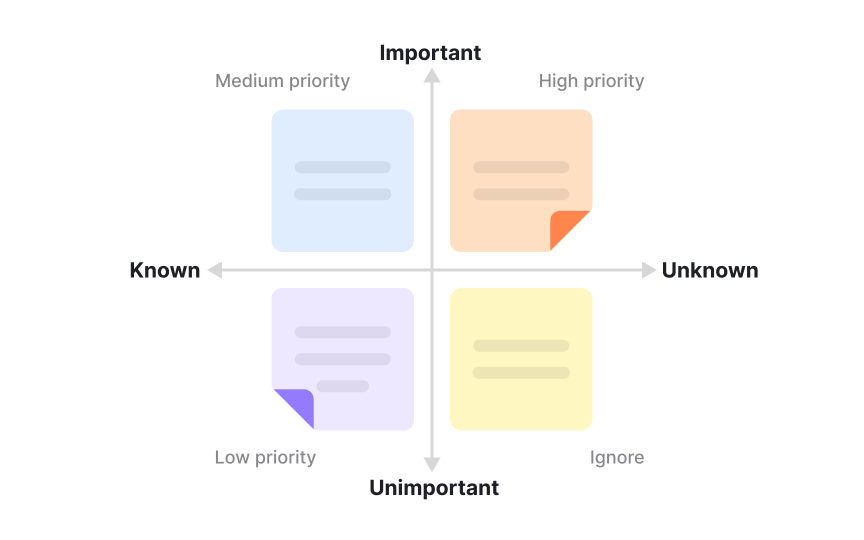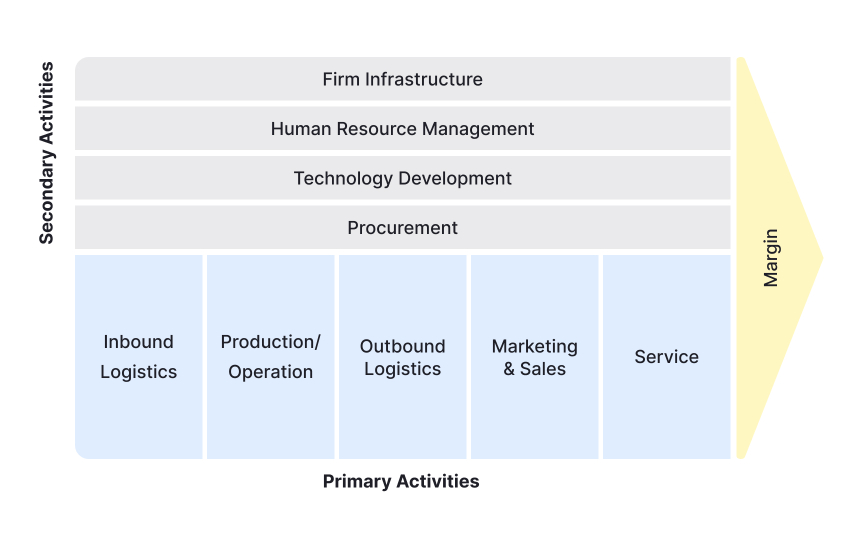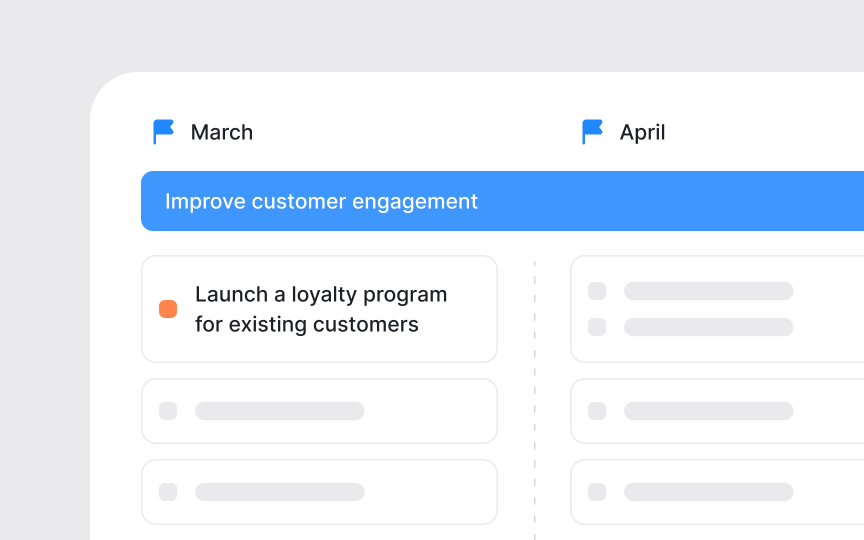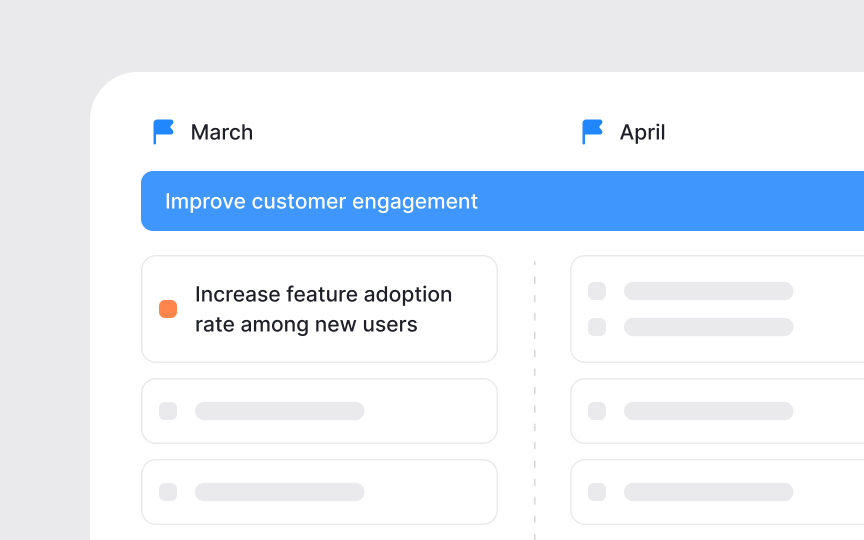Building a Product Strategy
Learn how to craft a clear product strategy by aligning user value, market position, and measurable outcomes.
A product strategy connects a bold mission with the practical steps that make it real. It answers 3 central questions:
- Who the product serves
- How it stands out
- What business goals it supports
The work begins with vision, but vision alone is not enough. Teams must also understand customer needs, the value chain, and competitor activity. This knowledge helps reveal opportunities while highlighting the challenges that could limit progress. Studying growth patterns in other markets and anticipating future changes ensures that decisions are based on evidence, not assumptions.
Clear goals and measurable indicators bring focus to the strategy. Key performance indicators link strategic direction to results, making it possible to see whether a product is on track or needs adjustment. Communication and collaboration are equally important. Strategy cannot live in silos; it gains strength when stakeholders understand the mission and align their efforts toward common objectives.
A strong product strategy is not a fixed plan. It is a framework that adapts over time. By reviewing progress, gathering feedback, and refining direction, teams keep the strategy relevant as markets evolve. This ongoing process increases the chances of building products that create lasting value for both customers and the business.
A strong product strategy begins with vision. A mission statement describes why the product exists, the change it seeks to create, and who will benefit from it. It is not tactical, but aspirational, giving teams a sense of purpose while leaving room for different paths to reach it.
When well-crafted, a mission is easy to recall and communicate. Google’s early vision to “organize the world’s information and make it universally accessible and useful” demonstrates how a statement can guide decisions far beyond the initial product scope. Such direction provides a consistent lens for evaluating opportunities and trade-offs.[1]
Without a mission, teams risk fragmentation, pursuing features or initiatives that lack coherence. A clear vision anchors the strategy and ensures that roadmaps remain focused on outcomes that align with long-term goals.
Pro Tip: Test your vision by asking: can every team member explain it in one sentence?
A strong product strategy cannot rely on a single snapshot of customer needs. Markets and user expectations evolve over time, shaped by new technologies, cultural shifts, and changing behaviors. To stay relevant, teams must continuously gather and integrate fresh customer insights into their planning.
This ongoing process influences strategic priorities and helps organizations anticipate emerging opportunities rather than react to outdated challenges. For example, a strategy once aimed at optimizing in-person services may need to shift toward mobile-first or self-service experiences as digital expectations grow.
Key practices for staying aligned include setting up continuous feedback loops that capture input from users at regular intervals, whether through surveys, interviews, analytics, or community forums. Teams should also analyze behavioral data such as feature adoption rates, churn patterns, or customer effort scores to identify shifts early. Another important practice is to integrate these insights into recurring strategy reviews, ensuring that decisions about priorities, features, or investments reflect the most current understanding of the market. Together, these practices turn feedback into action, keeping the roadmap flexible and grounded in evidence.[1][2]
Pro Tip: Establish at least one mechanism to capture evolving user insights (such as surveys, analytics, or community feedback) and review them during your periodic strategy updates.
A product never exists in isolation. It operates within a network of technologies, partners, and user processes known as the value chain. Understanding this environment is essential for shaping a strategy that works in practice, not just in concept.
The case of Netflix illustrates this clearly. When transitioning from DVD rentals to streaming, the company had to assess every
- Inbound logistics meant securing licensing rights and forging partnerships with production houses.
- Operations required building media production capacity and investing in technology for streaming.
- Outbound logistics relied on cloud infrastructure to deliver content globally.
- Marketing and sales leaned on data-driven recommendations.
- Service depended on continuous technical support and fresh content to retain subscribers.
Support activities such as talent acquisition, legal agreements, and infrastructure development tied these elements together. Only by mapping these dependencies could Netflix anticipate obstacles, such as limited bandwidth or licensing challenges, and plan strategically for long-term success.[1][2]
When teams ignore the value chain, they risk building products that look attractive on paper but cannot operate effectively in the real world. Mapping how a product fits into its value chain ensures opportunities are realistic, constraints are visible early, and investments are directed where they can create the greatest impact.
Pro Tip: Draw a diagram showing how your product interacts with existing tools, partners, and processes.
Building on earlier foundational research, we move beyond identifying who competitors are and what they offer to analyzing how they have evolved, the shifts in their market positioning, and which strategic moves led to their success or failure. This deeper view shows not just the current landscape but the patterns of growth and decline that can guide future decisions.
In practice, this means interpreting competitive insights to shape strategy more directly. Teams can use these findings to decide which features deserve priority, whether to adjust the business model, or how to refine go-to-market tactics. For example, noticing that a rival grew rapidly by introducing a freemium model could trigger a discussion about pricing options. Observing a failed product may highlight risks in scaling too quickly or neglecting customer support.
Competitive analysis should also be a continuous habit rather than a one-time task. In agile settings, some teams integrate it into their sprint process to keep the roadmap aligned with fast-moving market shifts.
Strategizing is the final step: translating insights into concrete priorities. This means identifying the most promising opportunities, addressing vulnerabilities, and outlining the core directions of the product strategy. When handled this way, competitive analysis evolves from a background scan into an active driver of roadmap planning and long-term positioning.
Markets evolve quickly, shaped by advances in technology and shifts in user expectations. A strategy that only reacts to change often arrives too late. Anticipating future trends allows teams to prepare solutions before demand peaks.
Technology can alter what is possible. The drop in storage costs, for example, enabled cloud services to expand, while the rise of digital wallets changed how people expect to pay. In the same way, emerging tools like automation or AI may soon redefine standard workflows. Watching these signals helps identify opportunities to serve customers in new ways.
Teams can track industry reports, follow regulatory updates, and analyze how early adopters behave. Frameworks like jobs-to-be-done encourage thinking beyond current tasks to the outcomes users seek, such as saving time or reducing effort. By monitoring these changes, products remain relevant and can meet expectations that will soon become the norm.
Pro Tip: List 3 trends in your industry and write how each could reshape user expectations.
Clear goals turn strategy into something actionable. These goals describe what success looks like, while
Goals can address revenue growth, customer retention, or adoption in new regions. KPIs make these goals concrete. Examples include monthly recurring revenue,
Practical steps involve first benchmarking current performance, then setting realistic targets. For instance, if retention is a priority, monitor churn and gather user feedback to understand why customers leave. If growth is the aim, track new sign-ups or expansion into specific markets. By tying goals directly to metrics, strategy becomes a living framework that can guide everyday decisions.
Pro Tip: Pair each strategic goal with one clear KPI. If it cannot be measured, refine it further.
A roadmap translates strategy into action, but it should highlight outcomes rather than lists of features. Focusing on results gives teams freedom to test different solutions while staying aligned with larger goals.
For example, instead of planning “launch a loyalty program,” frame the roadmap item as “increase
To make this practical, start by choosing a prioritization method such as RICE or MoSCoW to decide which objectives matter most. Then connect each
A strategy only works if it is understood. Communicating it effectively turns abstract goals into a shared plan of action across teams and leadership.
Practical steps make this easier. Begin by creating a one-page summary that captures the mission, goals, and KPIs in plain language. Use visuals such as roadmaps or story maps to show how
In meetings, focus on one strategic objective to avoid sidetracking into features or budgets. Capture unrelated ideas in a visible “parking lot” so people feel heard without losing focus. Test your message by explaining it first to a manager or peer. If they cannot restate the core points clearly, simplify further.
Sharing evidence also strengthens communication. Present user research, competitive insights, or
Execution turns strategy into visible progress. To make this manageable, broad goals must be broken into initiatives, and those initiatives further divided into specific tasks. One useful technique is story mapping, where the team visualizes the entire flow of a user journey from start to finish. This makes it easier to spot which steps are essential and which can be simplified or postponed.
Once the map is complete, identify the smallest part of the journey that can be tested without building the full product. For example, if the strategic goal is to streamline payments, you do not need to create a complete payment platform immediately. A first
This approach reduces risk, speeds up feedback, and ensures that every action taken is linked directly to strategy. By starting with the smallest testable part, the team learns quickly, avoids unnecessary work, and builds confidence in the direction of larger initiatives.
Monitoring progress is not just about reporting numbers. It is about using data to understand why a product is or is not meeting its goals. Metrics such as
Practical tools make this process actionable. Analytics dashboards help track usage trends, while surveys or short customer
A weak strategy can drain resources and damage a product’s chances of survival. When objectives are vague or generic, different teams interpret them differently, leading to scattered efforts and wasted time. Strategies built without real customer insight often target “everyone,” which usually means no one. This results in low adoption and frustration when features do not solve meaningful problems.
Focusing too heavily on features rather than value is another trap. Products overloaded with functions may look impressive but fail to address core needs. Over time, this creates technical debt and distracts the team from improvements that could actually drive
The cost of a poor strategy is not only financial. It erodes team confidence and trust in leadership, making course correction harder. Recognizing these risks early encourages teams to revisit assumptions, clarify goals, and rebuild a strategy that aligns vision, customer needs, and measurable outcomes.
Similar lessons

Continuous Discovery Mindset

Business Outcomes vs. Product Outcomes























